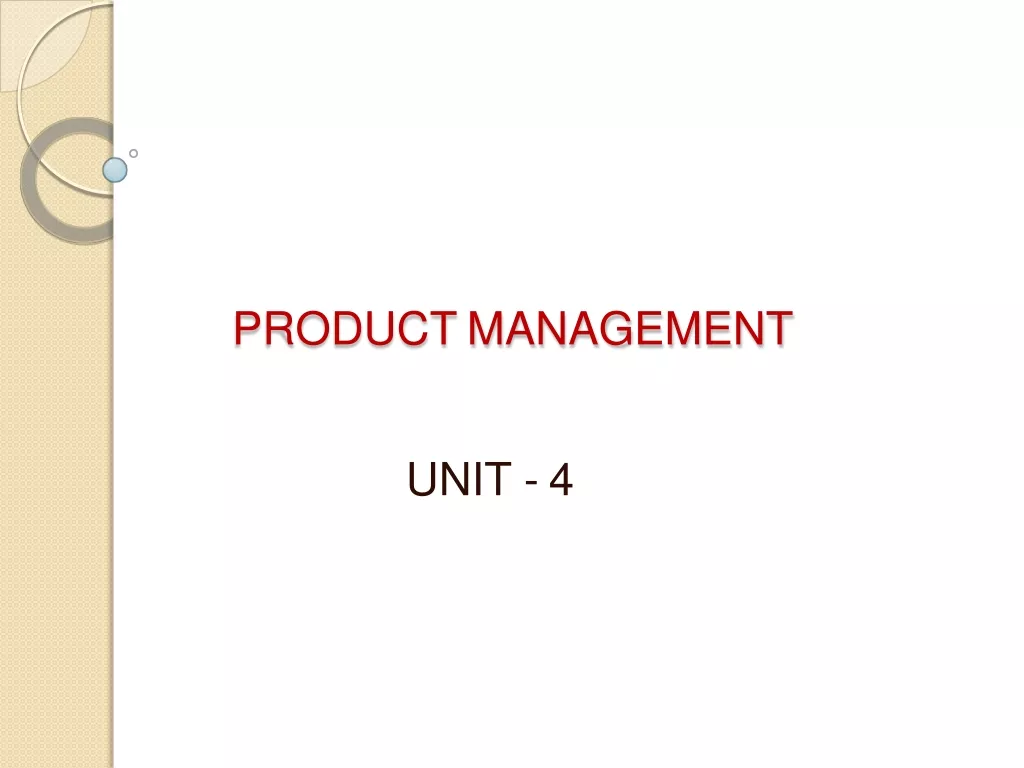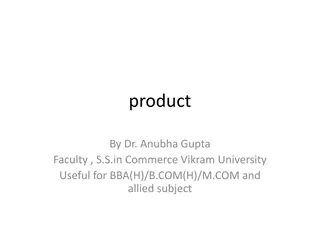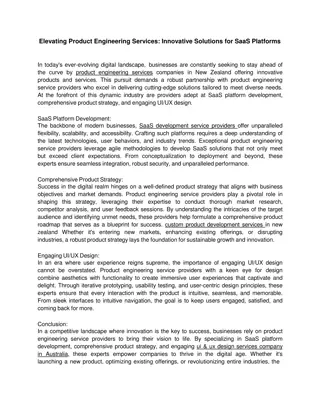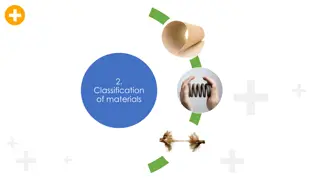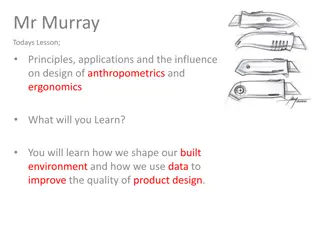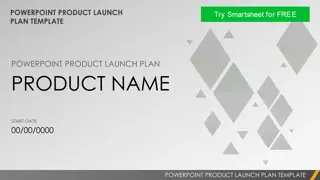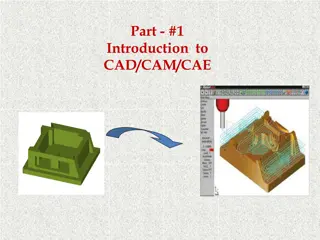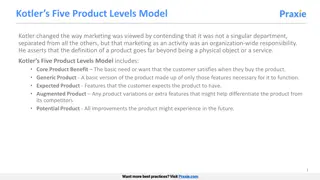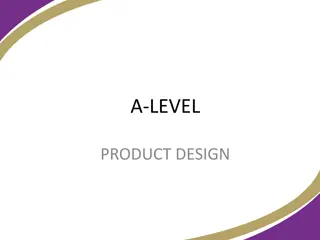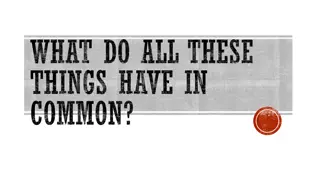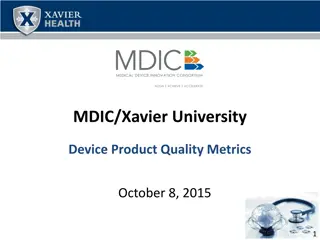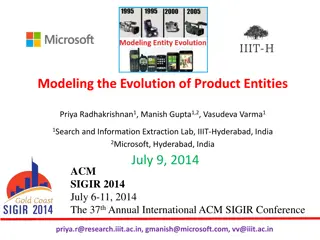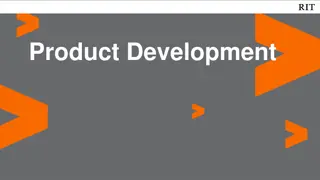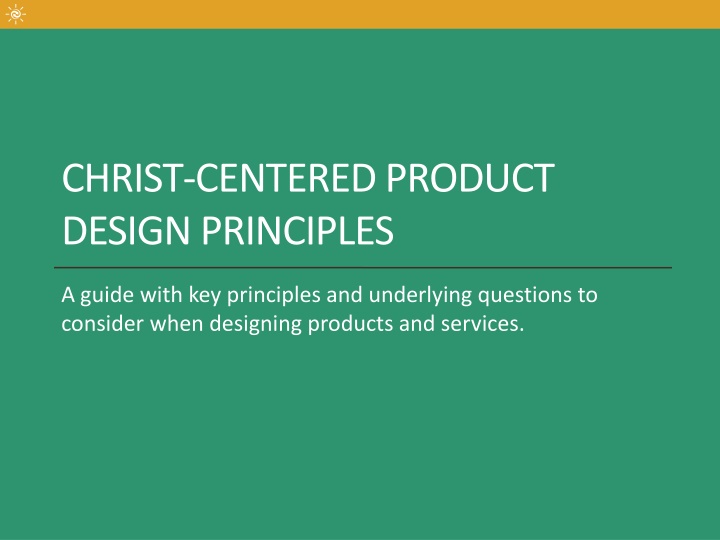
Christ-Centered Product Design Principles for Impactful Services
Explore key design principles for creating client-focused, Christ-centered products that contribute to holistic impact in spiritual, material, personal, and social domains. Understand the importance of client engagement, sustainability, and mission alignment in product development at HOPE.
Download Presentation

Please find below an Image/Link to download the presentation.
The content on the website is provided AS IS for your information and personal use only. It may not be sold, licensed, or shared on other websites without obtaining consent from the author. If you encounter any issues during the download, it is possible that the publisher has removed the file from their server.
You are allowed to download the files provided on this website for personal or commercial use, subject to the condition that they are used lawfully. All files are the property of their respective owners.
The content on the website is provided AS IS for your information and personal use only. It may not be sold, licensed, or shared on other websites without obtaining consent from the author.
E N D
Presentation Transcript
CHRIST-CENTERED PRODUCT DESIGN PRINCIPLES A guide with key principles and underlying questions to consider when designing products and services.
Why Christ-centered design principles? At HOPE we are called to bear witness to Christ and His Kingdom through how we work. A key part of this is designing our products and services to intentionally bear witness to Christ and His Kingdom. We design our products and services to contribute to impact in four domains. The key question that the principles in this ppt help us to address is: How can we design this product to contribute to holistic client impact, including spiritual impact? The principles and underlying questions in this ppt are available as a resource in the design process. It is recommended that the outcomes of the design process be reflected in the product card by including a Christ-centered strategy or holistic impact section in the product card.
Design Principles: characteristics of products and services at HOPE Client-focused Christ-centered Client-centered products are convenient and valuable to clients, provide opportunities for clients to fulfill their needs and desires, and abide by the client protection principles. Christ-centered products give clients the opportunity to encounter Christ and His Kingdom and have a clear pathway for clients to engage in the client spiritual journey. Christ-centered products have a clear SI strategy that fits with clients religious background, context, and needs. Missionally-aligned Mission-aligned products contribute to holistic impact in the four domains of client s lives (spiritual, material, personal, social). Where a particular product is stronger in one aspect of holistic impact than another, the product has a clear connection to other products that complement the product s impact on clients. Sustainable Sustainable products fit in the market context, are profitable, and are scalable to serve clients in the long run. Mission-aligned products serve clients in HOPE s target market, particularly the least- served.
Questions to consider when designing products and services Client-focused Christ-centered Who is this product designed for? What are the potential clients religious background, context, and needs? What are the potential clients needs, desires, educational background, and existing product/service options? What opportunities are there for clients to encounter Christ and His Kingdom through this product? How will this product meet the needs and desires of these potential clients? What opportunities do we have to invite clients to engage in the client spiritual transformation journey at our organization? What are the important moments in life for these clients that we can come alongside (for impact in all domains)? What is the SI strategy, and how has it been adapted to fit the religious background, context, and needs of the clients? Sustainable How will this product honor client s time? Which of the client protection principles might be challenging to uphold as we implement this product? How will we mitigate this risk? Missionally-aligned What is the market opportunity for this product? How is this product designed to contribute to holistic impact (spiritual, material, personal, social) in clients lives? How will this product be profitable/sustainable? How does this product serve clients in HOPE s target market, particularly frontier populations? How will this product be scaled?
DESIGN QUESTIONS The following slides take the questions to consider when designing products and services from the previous slides and recommend when in the design process to focus on particular questions.
Understand clients at the beginning of the design process: Who is this product designed for? How does this product serve clients in HOPE s target market, particularly frontier populations? What are the potential clients needs, desires, educational background, and existing product/service options? What are the potential clients religious background, context, and needs? What are the important moments in life for these clients that we can come alongside (for impact in all domains)? What is the market opportunity for this product?
Consider product details in the middle of the design process: How will this product meet the needs and desires of potential clients? How is this product designed to contribute to holistic impact (spiritual, material, personal, social) in clients lives? (directly or by connecting with other products and services at the organization) What opportunities are there for clients to encounter Christ and His Kingdom through this product? What opportunities do we have to invite the potential clients to engage in the overall client spiritual transformation journey at our organization? What is the SI strategy? How has the SI strategy been adapted to fit the religious background, context, and needs of the clients? How will this product be sustainable/profitable?
Additional considerations for later in the design process: Which of the client protection principles might be challenging to uphold as we implement this product? How will we mitigate this risk? How will this product honor client s time? How will this product be scaled?
APPENDIX: RESOURCES Appendix A: Client Spiritual Transformation Journey Appendix B: Spiritual Integration Framework Appendix C: Client Protection Principles Appendix D: Practical Design Guidance
Appendix B: Spiritual Integration Framework The SI Framework and principles for further guidance can be found here: SI Framework Guide
Appendix C: Client Protection Principles The Client Protection Principles articulate the standards of care that clients should expect to receive when doing business with a financial service provider. These principles were distilled from extensive work by many providers, networks, and supporting organizations. They represent a consensus view shared widely across the microfinance industry. Over 4,000 individuals, providers, institutions, regulators, and investors worldwide have endorsed these principles. Client Protection Principles Appropriate product design and delivery Prevention of over-indebtedness Transparency Responsible pricing Fair and respectful treatment of clients Privacy of client data Mechanisms for complaint resolution *the smart campaign has ended and passed the work of furthering client protection principles to organizations like Cerise
Appendix D: Practical Design Guidance Set aside time to pray and to listen to how the Spirit is guiding the design of this product. 1. Gather representative client feedback to understand the targeted clients & their context. Focus on the clients and step into their shoes. Conduct interviews and/or focus groups to hear from the prospective clients themselves as part of the design process. 2. Work through the design questions for Christ-centered products and services. 3. Consult with the Spiritual Integration team for feedback & support. 4. Prototype and test the product to gain feedback for improving the product. 5.


